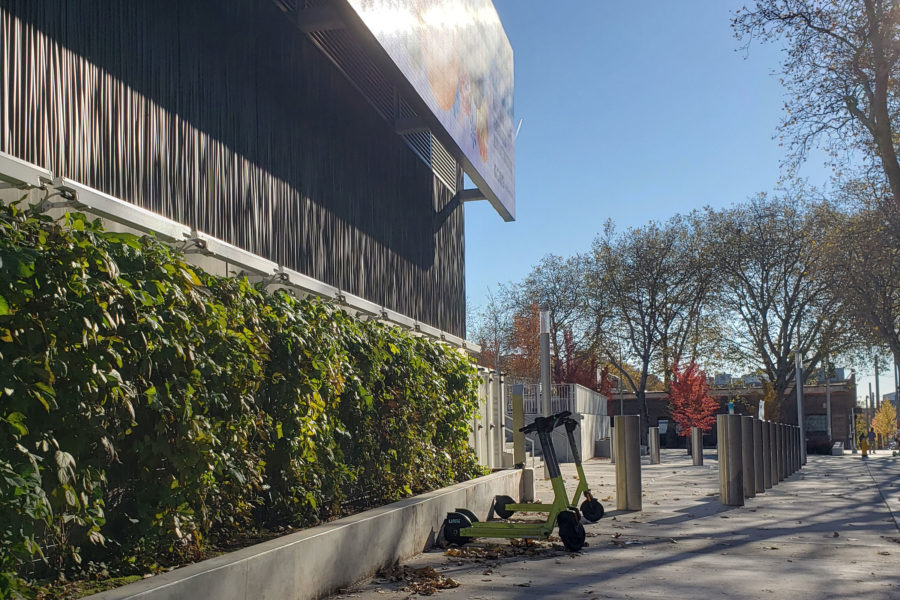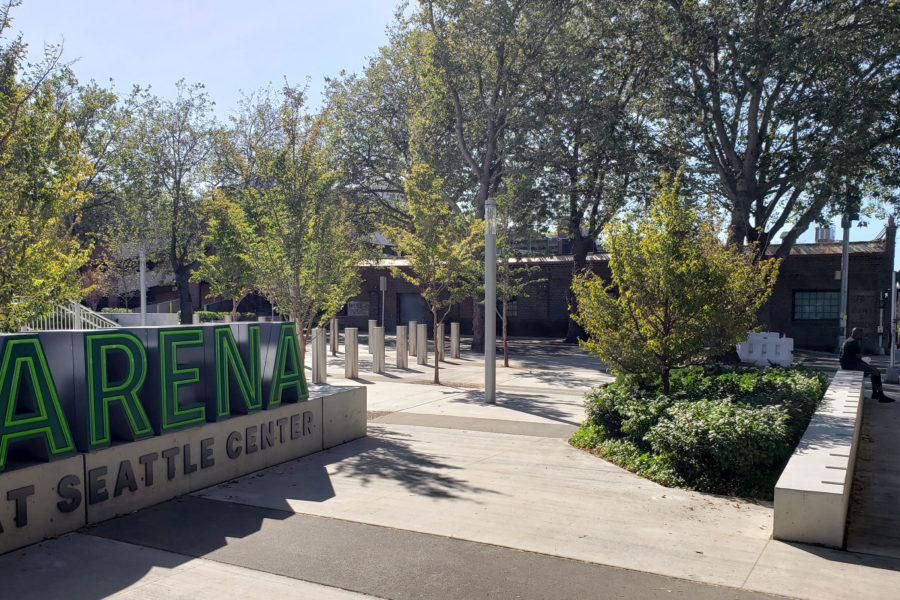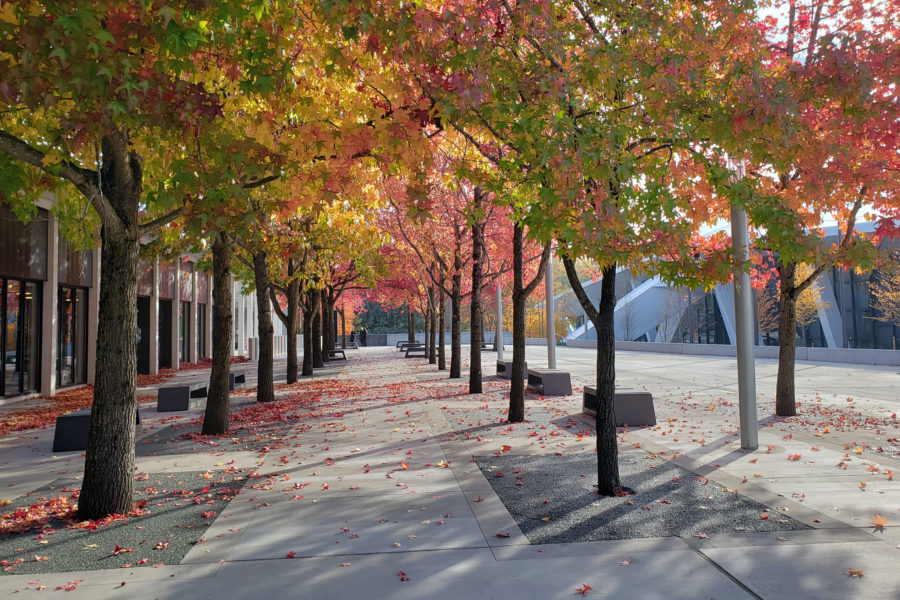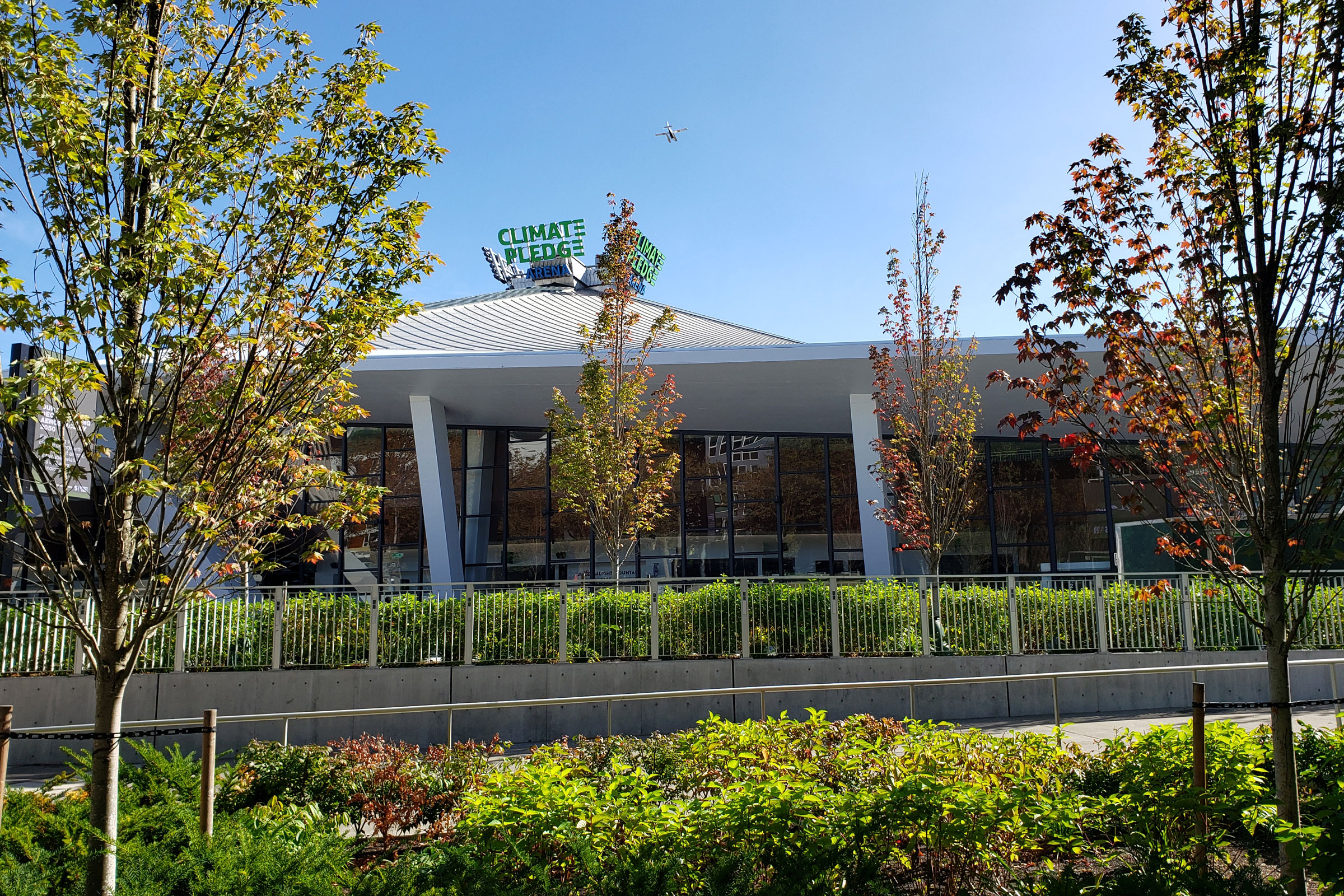Story at a glance:
- The Climate Pledge Arena in Seattle has a sustainable landscape architecture design that makes people feel welcome.
- Hundreds of trees were planted or saved as part of Swift Company’s landscape design.
- The landscape architecture firm also used greenscreens as a simple, beautiful, green solution throughout the project.
A historic landmark originally built to host the 1962 World’s Fair, today’s Climate Pledge Arena in Seattle continues to be a hub. The Populous-designed arena was completed in 2021, with landscape design by Swift Company. On this mega campus lovingly referred to by some as the “living room” of Seattle, the outdoor areas are just as important as what’s inside.
Swift’s mission was to design engaging sustainable spaces that act as a “front door” to the popular campus—developing positive, open green space that was both programmable and welcoming to all while not harming the environment. Their first big move was to protect the area’s historic tree canopy. They saved more than 100 trees around the perimeter and throughout the campus, according to Gareth Loveridge, who led the project with Barbara Swift.
Swift Company also used greenscreens throughout the project, essentially wrapping some of the mechanical buildings onsite in live greenery to better bring them into the natural landscape. greenscreen offers everything from large-scale, wall-mounted applications to fencing and vine walls that combine plantlife with innovative design. Their modular trellis panels can be installed vertically or horizontally and often work with plants already onsite.

greenscreens were used throughout the project for added, easy to maintain vegetation. Photo courtesy of Swift Company
Swift says using greenscreen allowed the design team to reduce heat and bring life to the space, which, considering its significant amount of paving, was crucial. “It can feel pretty expansive and hard, so the greenscreens are incredibly important in helping to deal with radiated heat and to humanize the space,” she says.
Swift Company uses greenscreen in its projects whenever there’s interest in having a vegetative wall. “It’s a reliable, simple product,” Loveridge says. “It relies on having plants in the ground versus investing huge resources to install and maintain something like a living wall … It’s letting plants in the ground where they want to be.”

More than 100 existing trees are being protected around the perimeter of the arena and South Parcel sites at the Climate Pledge Arena. The massive existing trees utilize large quantities of site groundwater and allow the site to absorb more run-off. More than 170 new trees were also installed. Photo courtesy of Swift Company
That said, the arena also has a massive living wall in its basement, he says, that he loves. “It gets a lot of interest. People love it.”
But Swift Company’s focus is on beautifying and improving the areas around buildings like these. Loveridge says a feature like a vine wall is an excellent opportunity for beautification and biophilic design. “Vine walls give you that feeling of living in nature. It’s literally right in front of your face,” he says.
He says they also made a lot of sense in this area of Seattle, not far from many theaters, where there’s a long history of using vine walls on buildings. “It’s about building that living character of Seattle, the Emerald City, with this attachment to being in the environment and having green space around.”
Part of the arena landscaping project involved using the plentiful space on top of the building in surprising and environmentally friendly ways. Loveridge says many people don’t realize there’s an estimated three acres of building beneath the plaza. “One of those spaces is the entire south edge. It used to be a loading dock, but it’s now essentially a green roof.” The new, intensive “green roof” is an entirely accessible space where people can hang out. The planted roof areas also absorb significant portions of the site stormwater and greater reduce the overall storm impacts.
Swift says part of her team’s commitment is to design using systems that won’t require extensive energy in the future to reap their benefits. “They will not require more investment to maintain. We’re looking at strategies that are going to have a long life.”
More Sustainable Features

Developing and protecting areas where trees and plants can thrive is a huge part of Swift Company’s mission. “We want open spaces that are meaningful to people, that people love,” says Gareth Loveridge of Swift Company, who led the landscape design at the Climate Pledge Arena in Seattle. “Trees are a big part of critical infrastructure.” Photo courtesy of Swift Company
The landscape design outside the Climate Pledge Arena also includes:
- 2,100 square feet of gravel surface over tree planting soil for stormwater run-off reduction and better long-term tree health and canopy development in pavement areas
- 6,000 square feet of soil cells below pavement
- 7,400 square feet of flexible porous pavement at existing and new tree pits
- Irrigation system uses a smart, weather-based controller with mobile device compatibility for real-time interface and increased efficiency of operations. This is a common best practice that contributes to how the site manages overall water resources.
- 107 existing trees are being protected around the perimeter of the arena and South Parcel sites. The massive existing trees utilize large quantities of site groundwater and allow the site to absorb more run-off.
- 172 new trees installed, with 15 different species to provide increased shade throughout the site and utilize storm water run-off from the pedestrian pavement areas.
- More than 38,000 square feet of new and restored planting areas. These planning areas use a combination of french drains, underdrains, and planting soil to distribute and absorb significant amounts of storm water run-off from the adjacent plazas to reduce flow into the system.
- 18,000 square feet of the new planting is intensive planting of trees and shrubs on-structure, covering the roof of underground parking and below grade arena spaces.



